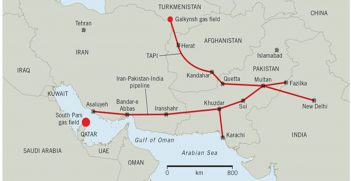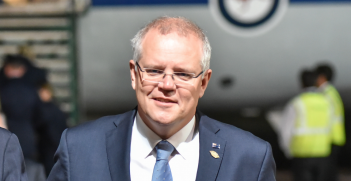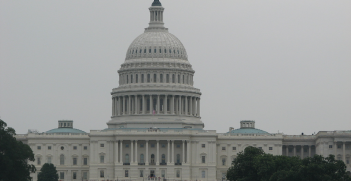Comparing International Law Rhetoric With Foreign Policy Practice: Australia’s Diplomatic Asylum Initiative

Australia never once purported to exercise its right to grant diplomatic asylum despite quite exceptionally choosing to assert the existence of that right. Other countries that denied the existence of such a right nevertheless granted it in practice.
When diplomatic asylum is mentioned, the example which immediately comes to mind is that of Australian national and Wikileaks founder, Julian Assange, who was holed up in Ecuador’s London embassy for seven years claiming to fear extradition to the United States on espionage charges if he were to leave embassy premises. However, most people would struggle to come up with further examples and with good reason: compared to grants of territorial asylum i.e. asylum granted by a State within its own territory, grants of diplomatic asylum outside Latin America have been rare in recent times. This is probably because the right of states to grant territorial asylum is well-established in international law; whereas, outside Latin America, the right of states to grant diplomatic asylum is highly contested. In the Assange case, Ecuador claimed it had a right to grant asylum. While the United Kingdom denied this, it was forced to accept the de facto situation because it was bound by the Vienna Convention on Diplomatic Relations to respect the inviolability of embassy premises.
Australian Policy and Practice From 1976 to the Change of Government in 1983
In March 1976, the Argentine armed forces seized power from Isabel Peron’s government. This prompted Hugh Dunn, who at the time was Australia’s Ambassador in Buenos Aires, to contact Canberra seeking guidance on how to respond to any requests for diplomatic asylum which might arise in consequence. Canberra responded by informing the Ambassador that the 8 May 1975 instructions were still in place and then listing “more specific criteria which ought to be satisfied before diplomatic asylum is granted.” These were the following:
(a) that the person seeking asylum is being pursued for political reasons or for political-type offences, and is not a common criminal;
(b) that there is danger to the life and liberty of the person involved on account of his or her political views, race, religion, nationality, or membership of a particular social group, which broadly comes under the heading of “political reasons or political-type offences” under (a) above; and
(c) that the person seeking asylum is in imminent physical danger which is effective and pressing, so that the urgency of accepting the person is dictated by humanitarian reasons.
Sometime between January 1979 and January 1980, the proposed guidelines dealing with diplomatic asylum expanded into draft instructions dealing with both diplomatic and territorial asylum because it was felt that posts needed to understand how the two kinds of asylum differed.
On 30 April 1980, Joachim Gottschalk came to Australia’s embassy in Berlin with his wife and toddler and asked for political asylum. According to Gottschalk, they had made 16 unsuccessful applications for permission to leave East Germany (the GDR) over four years. Their determination to leave had resulted in negative attention from the authorities including Mrs Gottschalk’s expulsion from university three years into a four-and-a-half year degree and the family being compulsorily moved from good accommodation to bad. After considering several embassies, they had selected the Australian embassy because it was “the most lightly guarded.” They were also aware of Australia’s recent grant of political asylum to their fellow East German national, Heidrun Giersh. Regardless, by approaching the embassy they had committed a crime for which they could be imprisoned from two to ten years so their die was cast. The embassy cabled Canberra for instructions. Canberra cabled back expressing suspicion that the incident might have “been stage-managed by [the East German] government in an effort to put us on a sport [sic] following the recent granting of asylum of Miss Giersch.” The embassy was instructed to tell the family that its asylum request would be considered but that they had to leave the embassy premises in the meantime. The embassy did as instructed and the family left the premises.
In a further cable sent on 1 May, Canberra emphasised that there was no direct comparison between the Giersch case and the Gottschalk case because the former had sought and received territorial asylum while the Gottschalks were seeking diplomatic asylum. After setting out Australia’s 1975 policy on diplomatic asylum, Canberra observed that justification for the grant of temporary refuge did not appear to exist and said that further information was required to form a judgment on whether the grant of permanent asylum was warranted. According to Canberra:
The government is disposed to grant asylum only where there is:
(I) factual information that the individual or a member of his immediate family has been persecuted on political grounds e.g. political prisoners, or
(II) very compelling circumstantial evidence that persecution is inevitable in the individual’s case, or
(III) established information that certain groups are disadvantaged in a particular country.
The embassy was also instructed to explain to Gottschalk that, since the GDR did not recognise the right to grant diplomatic asylum, it was presumed that, even if Australia did grant asylum, the GDR would refuse to give the family safe conduct out of the country making “any prospect of his being able to leave the G.D.R. by this means is extremely remote.” A week later, an embassy official met with Gottschalk off embassy premises and informed him that Australia could not assist the family but suggested that West Germany might be able to do so.
In January 1983, the Department of Foreign Affairs (DFA) at long last finalised its Asylum Instructions to Posts and State Offices. The very detailed instructions drew a distinction between the provision of “temporary shelter” from immediate danger posed by “lawless elements” and “diplomatic — permanent — asylum.” The instructions explained that Australia, unlike most other countries, accepted that States had a right to grant diplomatic asylum under international law but noted that Australia had “never in fact granted” diplomatic asylum. The key message of the instructions was that posts should recommend a grant of diplomatic asylum only as “a last resort” because Australia “would be most loathe to do so except in the most compelling circumstances, and then only if the Minister for Foreign Affairs agrees.”
Conclusion
In scholarly consideration of the foreign policy agendas of the Whitlam and Fraser governments, diplomatic asylum has received, at most, passing mention. This article has sought to fill the lacuna through close examination of the archival record, including many National Archives of Australia files that have not previously been studied.
Peter Edwards has noted that Whitlam has been criticised for trying to pursue too many bold initiatives at the same time and without adequate preparation, with the consequence that very little was achieved in many cases. The diplomatic asylum initiative is an example of one such initiative that came to nothing. While the response of Western embassies in Chile to those seeking asylum in the aftermath of the 1973 coup may have at first seemed to create a politically propitious moment for raising the matter at the UN, it seems quixotic of Australia to have persisted in seeking to have it inscribed on the agenda of the UNGA’s 29th session after its initial soundings made it clear that there was little real enthusiasm for the initiative among WEO countries. Regardless, once Australia had chosen to take its unorthodox legal stance on diplomatic asylum in such a high-profile manner at the UN, not only the Whitlam government but the Fraser government which followed felt that it would be too awkward to retreat from it. In any event, as DFA noted on a number of occasions, there was no real cost to maintaining the legal stance because it did not require any real change to Australian practice from what it had been prior to 1974.
While formal policy guidance was changed in May 1975 and kept in a state of some uncertainty through most of the Fraser government era, the bottom line is that Australia was as reluctant to make overt grants of diplomatic asylum after 1974 as it was before. Although the White Australia policy ceased to be a consideration during the Whitlam era, there remained many other reasons of realpolitik for either refusing to grant diplomatic asylum or dressing up what in substance was a grant of asylum as being no more than the ordinary grant of permission to migrate. DFA was aware that countries that denied the existence of a general international law right to grant diplomatic asylum would perceive the overt making of such a grant as a challenge to their territorial sovereignty and an unfriendly act. This would not be conducive to good diplomatic relations. Moreover, unless and until the territorial State could be convinced to grant safe conduct or the asylee could be smuggled out, the diplomatic mission would be faced with the headache of accommodating the asylee on its premises very possibly for years. Rather ironically, in fact, during the period under consideration, some countries, which denied the existence of a right to grant diplomatic asylum, nevertheless granted it in practice; whereas, Australia, which quite exceptionally chose to assert the existence of such a right, never once purported to exercise it.
Associate Professor Savitri Taylor researches at the Law School at La Trobe University. Her primary research focus is on refugee law and asylum policy at the national, regional and international level.
This article is an extract from Taylor’s article in Volume 73, Issue 4 of the Australian Journal of International Affairs titled ”Australia’s diplomatic asylum initiative at the United Nations: comparing international law rhetoric with foreign policy practice.” It is republished with permission.





